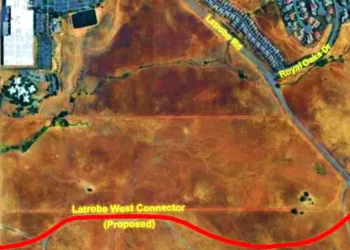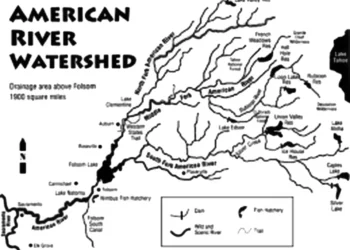By Lee Tannenbaum
PLACERVILLE, Calif. — A recent El Dorado County Board of Supervisors meeting has brought to light a significant misinterpretation of agricultural setback policies, raising concerns about potential impacts on land use decisions and agricultural operations within the county.
During the April 29, 2025, appeal hearing (Agenda Item No. 32), a supervisor inquired about the existence of agricultural setbacks on land designated for agricultural use. County staff responded affirmatively, referencing setbacks, but failed to distinguish between structural setbacks outlined in the County Zoning Ordinance and land use encroachment standards described in the El Dorado County General Plan.
This lack of clarity may have led to an inaccurate interpretation of applicable policies by the Board, potentially influencing decision-making processes.
Understanding the Distinction: Zoning Ordinance vs. General Plan
The El Dorado County Zoning Ordinance (Title 130, Section 130.30.020) specifies required setbacks for buildings and structures in various zoning designations, including agricultural zones. These setbacks regulate the distance that physical structures must be placed from property lines, roads, or watercourses, primarily for building code compliance, health and safety, and visual aesthetics.
In contrast, the El Dorado County General Plan contains land use policy language designed to protect agricultural operations from encroachment by incompatible non-agricultural uses. Specifically, Policy 8.1.3.1 under the Agricultural and Forestry Element provides that agricultural lands are to be protected from conflicts due to urban encroachment. The General Plan calls for the use of buffers, such as increased setbacks, vegetative screening, berms, or fencing, to reduce potential land use conflicts from neighboring residential properties.
Importantly, these protections are intended to shield agricultural operations from complaints regarding typical agricultural byproducts such as noise, odor, dust, chemical usage, and water consumption. The General Plan applies these setback and buffer concepts to neighboring non-agricultural properties, not to restrict agricultural land itself.
Cannabis Cultivation: Agricultural or Not?
The classification of cannabis cultivation adds another layer of complexity. While El Dorado County has designated that cannabis is not considered an agricultural crop for the purpose of right-to-farm protections, multiple California authorities recognize cannabis cultivation as agriculture.
Notably, the California Department of Food and Agriculture (CDFA) defines cannabis as an agricultural product under California Food and Agricultural Code § 40100. Additionally, California Business and Professions Code § 26060(a)(1) states that, for the purposes of cannabis regulation, cannabis is considered an agricultural product.
Furthermore, the California Department of Pesticide Regulation has determined that cannabis meets the definition of an “agricultural commodity,” subjecting cannabis growers to pesticide use reporting requirements applicable to agricultural commodities.
Department of Pesticide Regulation
While El Dorado County may exclude cannabis from right-to-farm protections, it cannot redefine cannabis cultivation as non-agricultural in contradiction to state law. This misclassification risks legal challenges and inconsistencies with state definitions and frameworks regarding agriculture.
Implications and Recommendations
The staff response during the appeal did not reference the General Plan’s land use protection language and implied broad setback restrictions on agricultural operations. This could have materially influenced the Board’s understanding during its decision-making process.
Misapplication of these policies may result in improper denial or restriction of lawful agricultural activity, inconsistencies with the adopted General Plan, legal challenges from misaligned policy enforcement, and conflicts with state definitions regarding agriculture.
To ensure lawful, consistent, and equitable policy application, it is recommended that County staff and the Board distinguish between zoning ordinance setbacks and General Plan land use encroachment protections. While local policies may restrict right-to-farm coverage for cannabis, they must still honor its state-recognized classification as agriculture.
A clarifying memorandum explaining these distinctions and reaffirming the General Plan’s authority and intent would be a prudent step to prevent future misinterpretations and to uphold the integrity of land use decisions in El Dorado County.
Sources:
- El Dorado County Zoning Ordinance, Title 130, Section 130.30.020
- El Dorado County General Plan, Policy 8.1.3.1
- California Food and Agricultural Code § 40100
- California Business and Professions Code § 26060(a)(1)
- California Department of Pesticide Regulation Enforcement Letter 17-03










